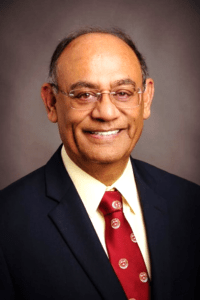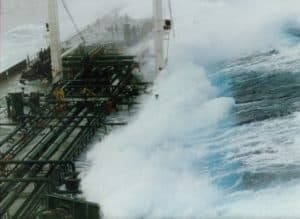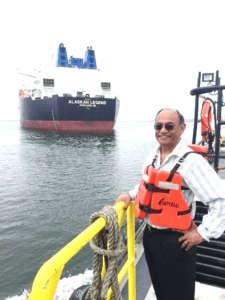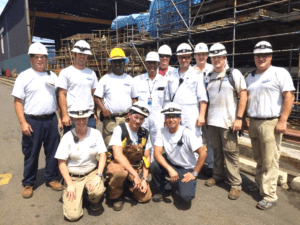Inside Angle
From 3M Health Information Systems
Culture of safety: Transformation through employee engagement
In my last blog titled “Developing a patient safety culture: What can we learn from other industries?”, I discussed the importance of healthcare safety. A culture of safety is essential to preventing and/or reducing medical errors, with recent reports estimating these errors have caused anywhere from “210,000 to 400,000 deaths a year among hospital patients in the U.S.” (The BMJ Press Release, May 4, 2016).

With an inviting smile, unhurried stance and warm words, Anil’s friendly personality paves the way for an honest and authentic dialogue. The youngest of five children, Anil remembers his father as hard-driving, utilitarian and disciplined. With the death of his father when he was 17, Anil recalls the deep support and encouragement of his grandmother. After completing his chemical engineering degree at one of the most elite schools in India, Anil followed his two engineer brothers to the U.S. for further education. These early mentoring relationships propelled Anil to follow his passion to pursue engineering.
Priscilla Knolle (PK): Thank you so much for your time and willingness to share your insights. Could you describe your journey to becoming a CEO who understands the importance of worker safety?
Anil Mathur (AM): I have always been curious and open-minded. When I joined the workforce, I encountered harmful and hostile working conditions for employees, all for quick gains, but long-term losses. Through these experiences I developed a passion for worker safety. I educated myself through leadership development, gaining a fuller appreciation for adaptive leadership. To me, safety is deeply personal. As a leader, this passion for safety has now developed into a deeper caring for my employees on an individual level. I care about my employees in every way, not just in the workplace safety realm. Where are you from? What is your story? What are your hopes and passions? I see my life and leadership style as a journey in mindfulness, guided by the North Star during uncertain times.
PK: As a CEO who is referred to by the National Safety Council as the “CEO who gets it,” could you elaborate more on why safety is a core value at ATC?
AM: Our ships sail through rough seas. This is a picture, albeit unusual, of an eighty-foot wave hitting one of our 
PK: That is indeed an extraordinary measurement of trust in your leadership and stability for ATC. How do you instill this sense of health and safety in employees on an ongoing basis?
AM: Thank you. I am indeed privileged to have wonderful relationships with others. A useful framework is to see each person as having a mindset, a skillset and a toolset. Altering mindsets is the most difficult, but ultimately the most effective tool for sustained change in workplace behavior. It offers an opportunity for powerful long-term influence on organizational well-being and growth. This transformation takes place with internally driven change and can only be achieved of a person’s own volition. At ATC, we instituted the mindfulness journey with systematic integration of safety into the culture. I routinely travel on the ships and freely mingle with 
In another example, a nurse nutritionist traveled on the ship for three years to promote healthy dietary choices. It is important to be physically fit when working on a ship; a lot of the work is physical and becoming tired increases the likelihood of injuries and incidents. Company financial performance cannot be the only reason to be safe. Safety must be a core principle in a culture of caring and cannot be driven by the bottom line alone. Such a causal linkage between safety and company performance might imply that the leader would forego safety if it did not deliver increased profits. When one does the job once, correctly and safely, it does improve efficiency, control cost and decrease losses. I have external stakeholders, such as the Workers’ Union, who ride on the ships and our values are evident to them. Unions and ATC leadership both care about the important things like safety and employee wellness, and the alignment is apparent. I don’t mind sacrificing near term results for lasting, predictable, long-term gains. For example, having a specialized nurse travel with us for three years was 200 percent over our budget; we had not planned for this need, but it proved to be a solid investment. A developed EQ brings self-awareness and with self-awareness, employees are provided with reflection and introspection time to discover why they execute jobs the way they do. Such introspection, when combined with safety advocacy, creates an environment where employees, of their own volition, permanently alter their work practices to create a safer working environment.
Anil states that a caring culture creates a psychologically safe place to work, and the benefits of worker engagement in such an environment are observable, vast and immeasurable.
Can you, my blog readers, share activities that occur in hospitals and in the healthcare industry which require precision, are often repetitive and demand great focus? Would workers performing these activities benefit from leadership mandate and guidance for employee safety?
In the next installment of the blog, I will present Anil’s insights into key leader attributes and leadership principles that enable organizational health. I hope you will continue to stay tuned! As always, please feel free to share your insights, experiences, and ideas in the comments. You can also reach me at pknolle@mmm.com.
Priscilla Knolle, MD, CPHQ, CHDA, CCS, is a Clinical Transformation Consultant at 3M Health Information Systems.




Absolutely right! There is no chance for any organization to not go through digital transformation and take its full advantages for a better competition in the industry.
Also I would like to bring your attention on Peak Performance Scorecard: Are Healthcare Organizations Measuring Up?